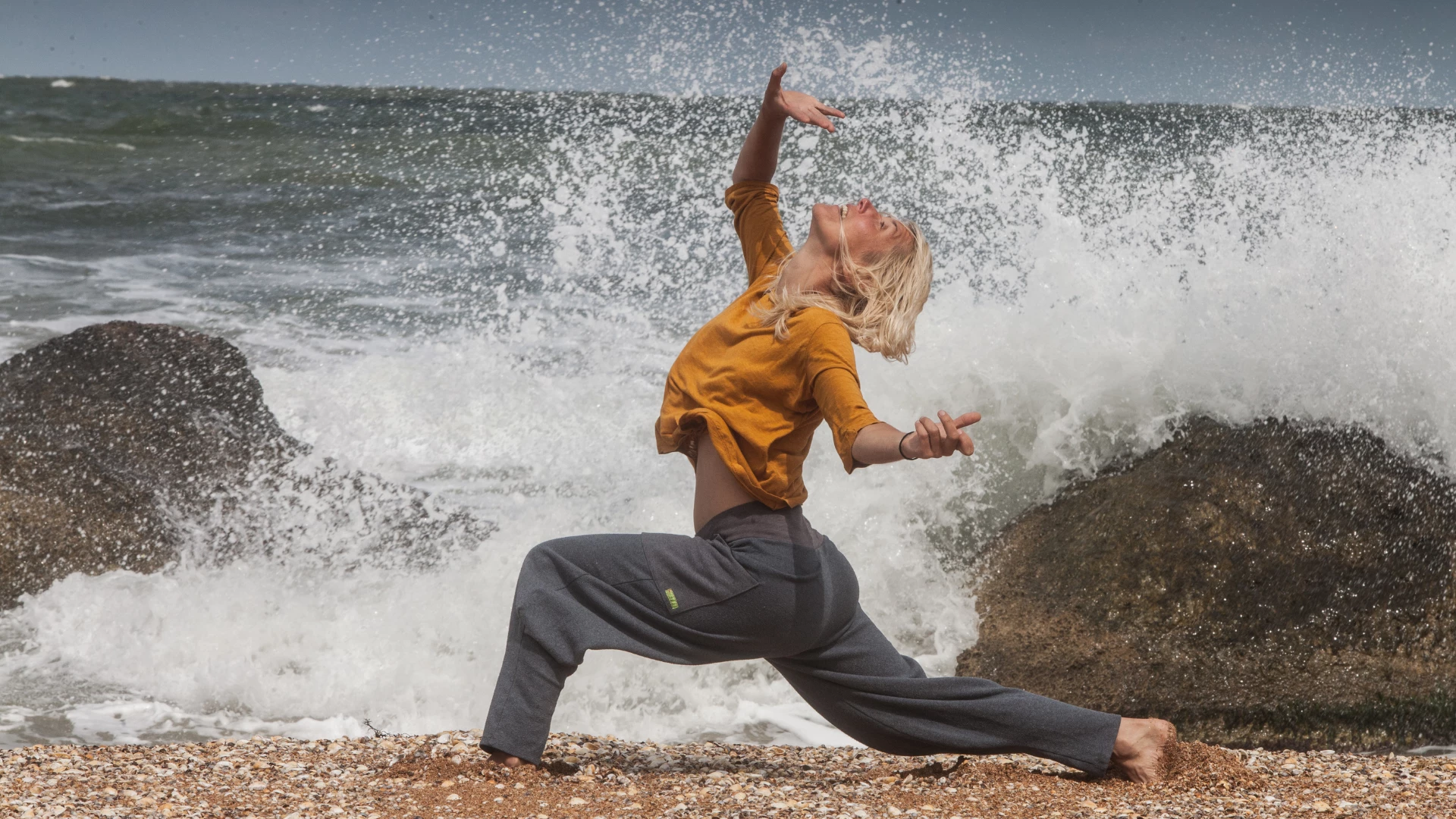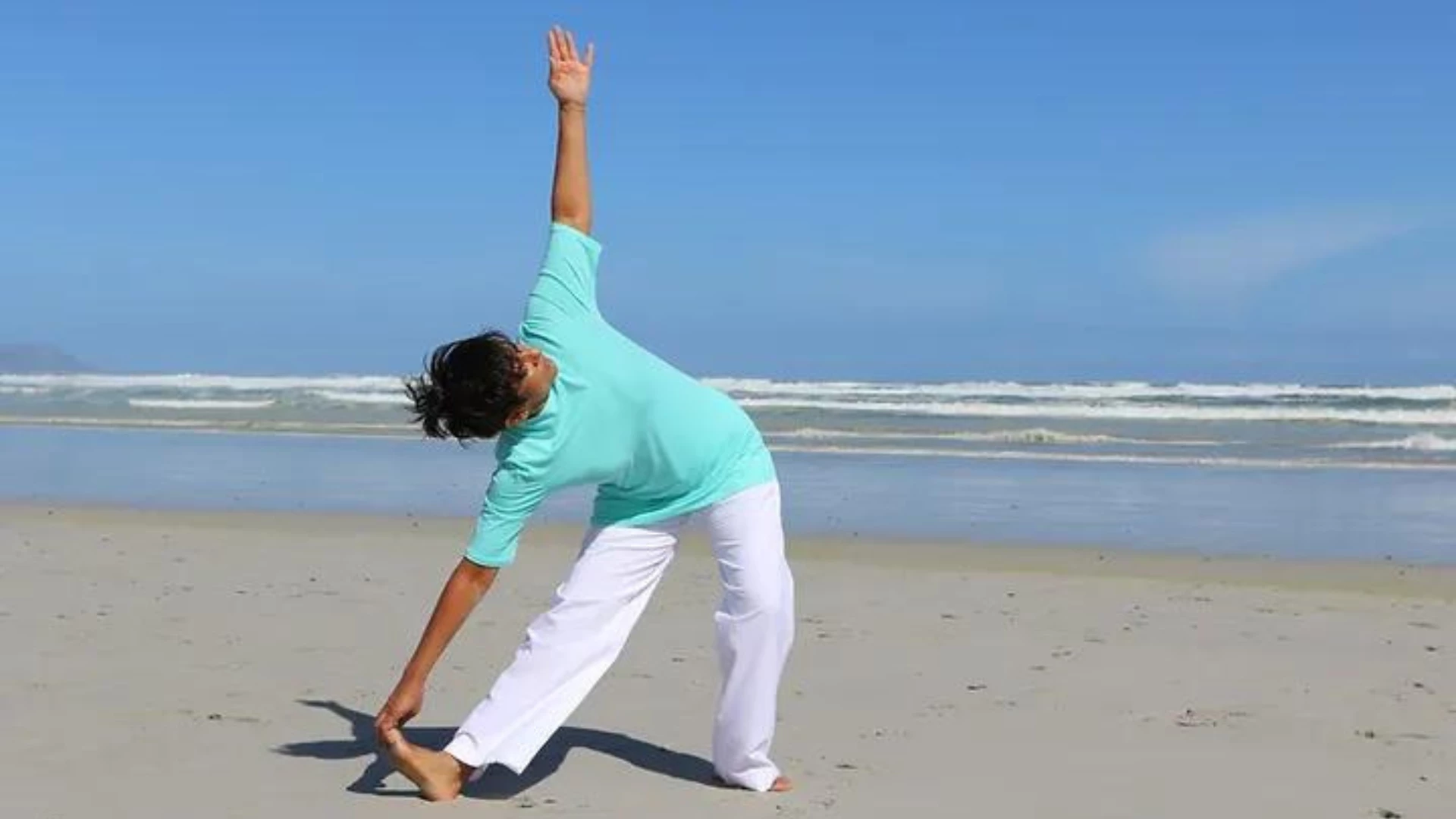Pandiculation in Yoga: A Healthier Way to Stretch

Article At A Glance
We associate yoga with stretching to increase flexibility, relieve tension, and enhance range of motion. However, fascia research and bio tensegrity, our body’s structural architecture, reveals how traditional stretching techniques used in yoga may not be best for every body’s design. Instead, you might want to explore the practice of pandiculation in yoga, the natural way of restoring elasticity and integrity to the body’s fascia. A practice video is included.
Yoga is an ancient practice that has been used for centuries to improve physical and mental well-being. Asana, the physical practice, is only one limb of yoga, but it is the limb that most people are familiar with. We associate yoga with stretching to increase flexibility, relieve tension, and enhance range of motion. However, fascia research and biotensegrity, the structural architecture of our body is revealing how traditional stretching techniques used in yoga may not be best for our bodies’ design. There is a risk of resistance, overstretching, or injury if not done carefully. Instead, practice pandiculation in yoga, the natural way of restoring elasticity and integrity to the body’s fascia.
What Exactly is Pandiculation?

According to this research paper by manual therapist Luiz Fernando Bertolucci, “Pandiculation is nature’s way of maintaining the integrity of the myofascial system.” Often described as “the stretch and yawn” response, pandiculation is that urge we feel to unwind when we wake up from sleep. You may have seen dogs, cats, and newborn babies “stretch” in this way. The first thing you notice when you pandiculate is how the sensation differs from how we learned to stretch, breathe and align the body in yoga.
Although described as an involuntary stretch. According to Fascial Anatomist John Sharkey, it’s not a stretch as we know it. While stretching is linked to lengthening or getting longer, like an elastic band, pandiculation is expansive. It’s a whole-body sense of expansion from within. Not just one part.
The motion is omnidirectional because of the nature of our tensegral geometry. That’s because the force is transmitted throughout the whole body. Making the motion effortless and efficient. There is no strain, discomfort, or risk of injury to your joints. You’ll never have to use blocks, straps, or bolsters. You won’t fight to find flexibility with pandiculation.
How Does Stretching Differ from Pandiculation in Yoga?

The primary distinction between pandiculation and stretching is the manner in which the body moves and how the nervous system responds to that motion. Traditional stretching involves passively stretching the muscles at a joint to get a maximum range of motion. This can result in overstretching, which can cause joint laxity or add strain to the fascia.
The whole-body spiral motion of pandiculation revitalizes and regenerates fascia in three ways.
- Expansion: improves the body’s ability to absorb shock.
- Hydration: improves suppleness.
- Recoil: Increases spring loading and our capacity to store energy.
The resulting biochemistry is different. The “feel-good” of a stretch differs from a nurturing sensation of pandiculation, linked to oxytocin.
Pandiculation is NOT Muscle Contraction

If you search for a somatic explanation of pandiculation online, it’s sometimes described as an involuntary muscle contraction followed by a slow release. In fascial anatomy, there is no isolated muscle contraction.
John Sharkey is a clinical anatomist, exercise physiologist, and recognized expert in fascia science who teaches worldwide. According to Sharkey, muscle is not separate from fascia. It’s intertwined and continuous with our ligaments and bones. Fascia may take different forms within our body, whether to supply lubrication, shock absorbency, elasticity, or scaffolding. There is no separation. In fact, fascia interpenetrates every living cell in our body. Described as a soft tissue matrix, a web or fabric that holds and shapes everything, giving our body form. It provides the environment in which living cells communicate with each other, making it the largest super-sensory organ of our body, apart from the nervous system.
This means we shape-shift without even noticing. In response to motion, emotion, lack of motion, hormonal changes, sound, light, touch, and vibration. Fascia connects body and mind. We experience stiffness, chronic pain, and inflammation under strain. A sign of how emotional trauma becomes held in the body.
Pandiculation nourishes the body’s fascia while regulating the nervous system, integrating body and mind, which lies at the very heart of yoga.
If you have lost the urge to pandiculate, it’s a sign that your nervous system has adapted in response to stress. This results in somatic amnesia, the loss of connection to this embodied blueprint.
How to Pandiculate, the SomaSensing Way
Pandiculation feels like a “whole body yawn,” and it only takes a moment to reconnect. The easiest way to trigger the sensation is to imagine that you’ve woken up for the first time today or that you’ve been sitting for a long time and your body needs to unwind.
- Notice how the urge to pandiculate begins from within.
- A spontaneous in-breath and whole-body sensation of expansion—like a balloon—accompanies the urge to pandiculate.
- Notice a pause, the breath suspended as the body unwinds from the inside out.
- A spontaneous sigh follows at the end, leaving you with a sense of restoration.
You may not feel a huge sense of expansion to begin with because of areas of restriction in your body or habitual patterning. Bringing your awareness to your lower back can improve the expansion from within.
Another way to trigger the urge is through a “pull” sensation.
- Begin by holding a bar with both hands and pull away.
- Notice whether your body takes a spontaneous in-breath as you pull away. Is there a sense of expansion?
- If not you could invite the tailbone to glide under as you pull away.
- You could also pull away with one arm. Cross the arm over to the opposite side and pull. Notice how the body spirals.
Lower Back Motion in Pandiculation
Fascia has many forms, from loose and gel-like to fibrous and dense. The denser form in the lower back is called the thoracolumbar fascia. Denser forms of fascia tend to become stiff and lose suppleness. The feel-good motion of pandiculation reaches those dense areas better than a stretch ever can, especially in the lower back. This is because fascia is continuous from the inside out. When the lower back expands, it reaches the pelvic floor, the psoas, the diaphragm, the neck, the shoulders, and the entire body.
The Benefits of Pandiculation in Yoga 
- Pandiculation gets to areas a stretch can’t get to.
- The motion resets the nervous system and tones the Vagus nerve.
- Pandiculation connects body and mind.
- It’s a natural whole-body motion.
- It’s effortless; anyone can practice.
- You don’t have to think about breathing; it’s spontaneous.
- It restores a healthy psoas and pelvic floor.
- Pandiculation releases long-held tension and strain from the inside out.
How to Practice Somatic Pandiculation in Yoga
1. Cat/Cow Pose (Marjaryasana/Bitilasana)


- Start in Tabletop Pose (Bharmanasana) and let your body rest. Let your head hang, your shoulders shrug, and find the most comfortable way to hang out.
- From this place of rest, notice how a motion arises. Your body may start to sway or unwind.
- Instead of initiating the motion, let the unwinding movement emerge.
- If you don’t sense a motion, you could initiate by sending the ground away with one hand.
2. Child’s Pose (Balasana)
- Come to rest in Child’s Pose.
- Sit back on your heels to kneel with your hands resting on the ground before you.
- Now send the floor away from you with the heels of your hands. Notice how your body takes in a breath and your lower back expands. Take a moment to pause on that breath until your body has the urge to sigh.
3. Downward Facing Dog Pose (Adho Mukha Svanasana)
- Start in Tabletop Pose.
- Curl your toes under, sending the floor away, letting the breath arrive like a whole-body yawn as the tailbone reaches up in the air.
- Pause to unwind, exploring areas that feel a little stiff. Let yourself play. Release with a sigh when your body is ready.
4. Pandiculation in a Seated Yoga Pose
- Sit on the floor with your legs out in front, knees bent.
- Reach to grab ahold of the tops of your toes and balls of your feet.
- Move your feet toward the ground to initiate pandiculation. Notice how the breath arrives and how your lower back expands.
- Pause on that expansion, releasing with a sigh.
- Explore going slow and then quick, noticing how your entire fascial fabric moves.
Somatic Practice Video: Fascial Unwinding, a Healing Blueprint
Also, read...
3 Somatic Exercises for Healthy Posture
Developing Interoception: How to Listen to Your Body Wisdom
5-Step Yoga Sequencing for Shoulderstand
Related courses
Body Sensing: Myofascial Release for Yoga Practitioners
Journey to Center: A Yoga Guide to Unlock the Full Potential of Your Core
Yoga for Healthy Hips: Principles for a Safe Practice
The Essential Trinity of the Body: The Role of the 3 Diaphragms

Meet Yasmin Lambat, Master Somatic Movement Therapist, Educator, and Founder of SomaSensing Body Unwinding. A trauma healing somatic movement practice based on the emerging research on fascia, biotensegrity, and nervous system regulation.
Her movement and manual therapy experience spans 30 years. It includes training as a Yoga and Polestar Pilates teacher as well as a myofascial release therapist. It was her introduction to somatic movement that paved the way to somatic healing.
In her workshops and coaching services, Yasmin draws on the latest research and best practices in the field to provide a practical embodied experience for integrating somatic movement therapy and somatic practices into participants’ lives.





